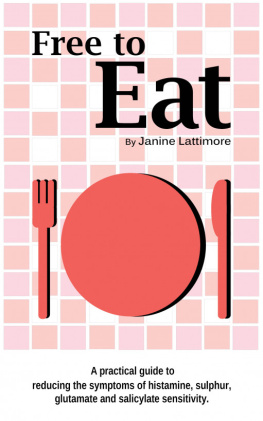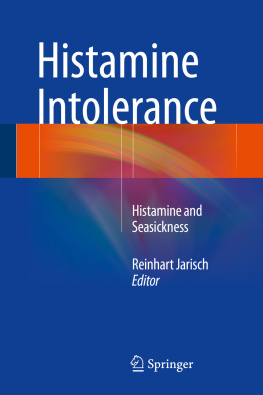No part of the materials available through this book (except for personal use) may be copied, photocopied, reproduced, translated or reduced to any electronic medium or machine-readable form, in whole or in part, without prior written consent of the publisher.
The information contained in this book should be used aa a reference only, and it is not intended to give any medical advice.
Table of Contents
How to avoid histamine intolerance ......................
reaction ? ........................................

How does histamine work ?
H istamine is a substance that works as a courier or messenger, it transfers information between cells and plays a vital role in our body but more particularly for our immune system. This substance is produced by a natural amino acid (produced internally by our body) or external (brought by our food).
Histamine is one of the natural biogenic amines that are produced during decomposition processes.
This substance is an intermediary between cells but also performs the following functions: dilation of blood vessels, contraction of the body's muscles, the transmission of stimuli between nerves, digestion of lipids, formation of blood molecules, wound healing and helps the immune system and the nycthemeral rhythm to function properly.
In order to function properly, histamine must not be in abundance in our body, if the body produces a lot of histamines or if we eat a lot of things that promote this

production, it can be harmful to our heart rate, blood pressure, and neurological system.
Histamine functions through the secretion and activation of four receptors called histamine receptors known as H1, H2, H3, H4:
- The histamine H1 receptor is present throughout the body.
- The histamine H2 receptor is located in the stomach.
- The histamine H3 receptor is present in the brain, intestine, and lungs.
- The histamine H4 receptor is entirely localized in the brain.
- The histamine H2 produced in the stomach causes acid secretion.
- The histamine H1 and histamine H4 located in the rest of the body stimulate the reaction of the immune system, muscles, blood vessels, nerve cells, and airways.

- The histamine H3 has a major role in controlling and blocking histamine release.


Where histamine is produced ?
I n the human body, histamine is located between tissue mast cells and basophilic granulocytes in the blood. This substance is present in granules and is released only when stimulated by allergic reactions, endogenous mediators Kinins, Phospholipases Venoms, certain drugs (Morphine or Codeine Tubocurarine Polymyxin), Cold- Hot Pressure, certain foods (tuna, albacore...).
Mast cells are located in the skin, intestine, bronchi, tumors, and liver. But also, histamine may not be stored but just synthesized in blood platelets, lymphocytes, stomach, and dendritic cells.
This substance is produced in the brain neurons, which allows its rapid release in case of stimulation.

What's histamine intolerance ?
H istamine intolerance or histaminosis as it is called by health professionals does not really carry the true meaning of its name but represents the opposite.
It is a reaction of the body when the amount of histamine is much higher than normal. This is produced as a result of an overproduction of this substance by our body (excess of histamine) or not enough decomposition (slow decomposition as a result of a dysfunction in the enzymes HNMT or DAO).
In the vast majority of cases, people with histaminosis have dysfunction in diamine oxidase (DAO) which occurs in very low amounts causing the histamine to break down inefficiently in the gut. Thus, if your body suffers from a lack of this enzyme and you eat a lot of foods rich in histamine which require a rapid decomposition of this substance, your body will not be able to perform the decomposition function properly and this will automatically cause an intolerance.

On the other hand, if the level of diamine oxidase is within the norm, your body will break down the histamine before it reaches your bloodstream.
The diagnosis of histamine intolerance is made by a medical specialist or a naturopath through precise tests and analyses. It is a matter of checking if there is a deficiency in the level of DAO in the body through a test of activity of da diamine oxidase. This test measures the level of this enzyme in the blood plasma and can be influenced by several factors: taking certain medications, the menstrual period in women, surgery, intestinal inflammation, alcohol...
But also, the dysfunction of the DAO can be caused by genetic factors, so your specialist or naturopath will ask you for a genetic test for DAO deficiency. The purpose of this test is to indicate the existence or absence of a transformation in the formation of the DAO enzyme. To perform this genetic test, specialists use a blood test or a test of the mucous membrane of your mouth. The results of both tests are usually the same and are not influenced by other factors.
























